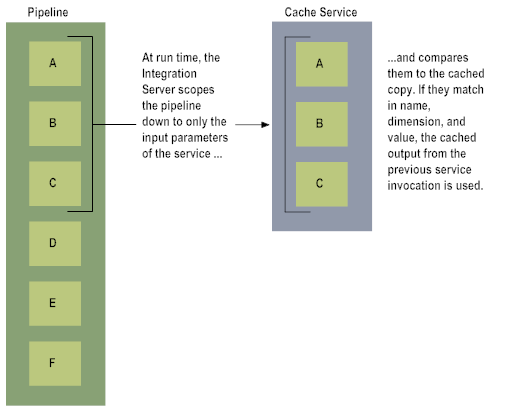When Are Cached Results Returned?
When you enable caching for a service in Software AG Designer, Integration Server handles the cached results differently, depending on whether the service has input parameters. It is recommended that a cached service has input parameters.
When a cached service has input parameters, at run time Integration Server scopes the pipeline down to only the declared input parameters of the service. Integration Server compares the scoped-down inputs to the previously stored copy of the inputs. If a cached entry exists with input parameters that have the same values, Integration Server returns the cached results from the previous service invocation.
Note:
If a cached entry with input parameter values that are identical to the current invocation does not exist in the cache, Integration Server executes the service and stores the results in the cache.
Pipeline Inputs Are Compared to the Cached Copy at Run Time
When a cached service does not have input parameters (for example, a date/time service) and previous results do not exist in the cache, at run time Integration Server executes the service and stores the results. When the service executes again, Integration Server uses the cached copy. In other words, Integration Server does not use the run-time pipeline for the current service invocation; you will always receive cached results until the cache expires.
Important:
If a cached service input signature includes a Document Reference or Document Reference List variable and the referenced document type changes or is modified, you must reset the service cache. If you do not reset it,
Integration Server uses the old cached input parameters at run time until such time as the cached results expire. You can reset the cache from
Designer or
Integration Server Administrator. For more information about resetting service cache from
Integration Server Administrator, see
Resetting the Cache.

